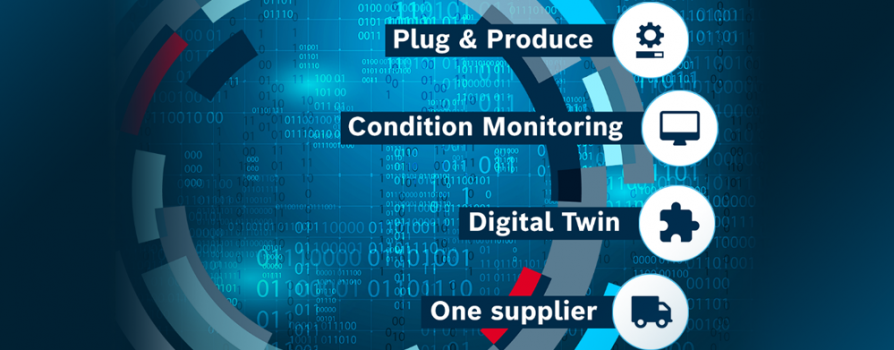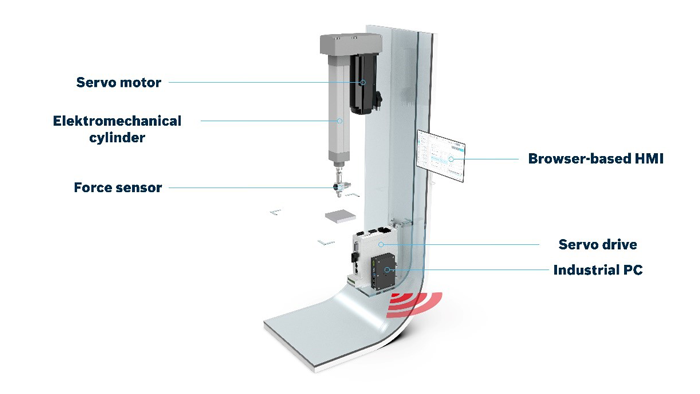
The requirements of construction engineers and machine manufacturers are subject to fast transformation. Driven by ever faster development cycles, they are looking for solutions that adapt flexibly to new production processes. With intelligent mechatronic solutions and intelligent products, Rexroth linear technology meets these requirements precisely.
At Rexroth, we have laid the foundations for the systematic development of linear motion technology at an early stage. Today we are already offering a wealth of digital engineering tools and configurators that can be used to simplify design processes and make them intelligent in the true sense of the word. But that is only the beginning. We see digital transformation as a process that requires continuous development, and that helps us to raise linear motion technology to a new level.
A platform for intelligent mechatronic solutions
Based on our proven product portfolio, we are making linear motion technology more intelligent - from vertical integration with additional features such as software and electronics to the targeted use of sensors in our linear motion technology components. We have already introduced a first solution for exactly that purpose to the market last year. The Intelligent Function Kit for pressing and joining applications is a modular mechatronic solution that offers customers mechanics, electrics and software as a subsystem. One of the outstanding features of the system is the intuitive commissioning and process configuration, as no programming knowledge is required either. Even during subsequent operations, the software is intuitive and can be used without any prior knowledge right from the start. Our new platform for intelligent mechatronic solutions is the next logical step in this approach: we are putting a clear focus on our customers' needs by offering a suitable solution for each process step.

Unpack, connect, go
This already starts with product selection and sizing: Rexroth customers do not have to familiarize themselves hardly with linear motion technology, but realize their ideas intuitively with our tools in just a few steps leading to the finished product. For startup, we are focusing on plug & produce, a principle that has been known for years in the consumer area as plug & play. For linear axes, this means in practice: unpacking, connecting and carrying out the function test in just a few minutes.
From flexibility to transformability:
In the operation itself, there has been a trend towards adaptable, and therefore transformable, products and systems. Although software already offers a certain degree of flexibility today, we are soon reaching the limits of what is currently possible. In ever shorter production times, we need systems that can be adapted in the blink of an eye. One example is a quick-change system for linear axes: they can be exchanged with just two clicks, then commissioned and are immediately ready for new tasks.
Ultimately, this quick exchange of components also affects maintenance: if a linear axis needs service, a technician today can immediately insert a replacement and the machine can continue working without any downtime. In addition, sensors offer the opportunity to actively use predictive maintenance and condition monitoring to increase system efficiency.
The further development of linear motion technology is completed by completely new product approaches that sustainably improve system efficiency. An example would be an adaptive compensation element that offers unparalleled improvement in positioning accuracy for robots and Cartesian systems.

